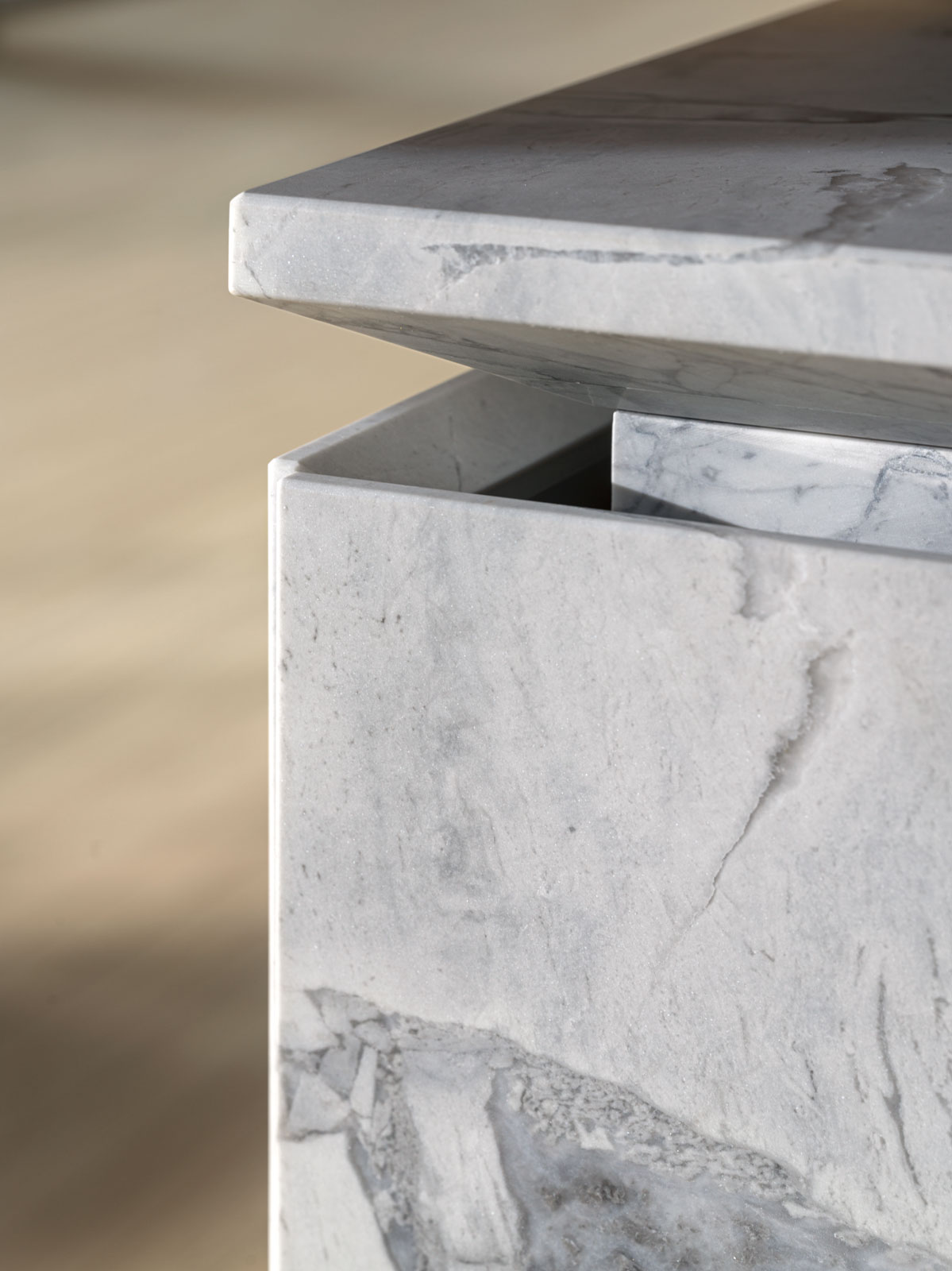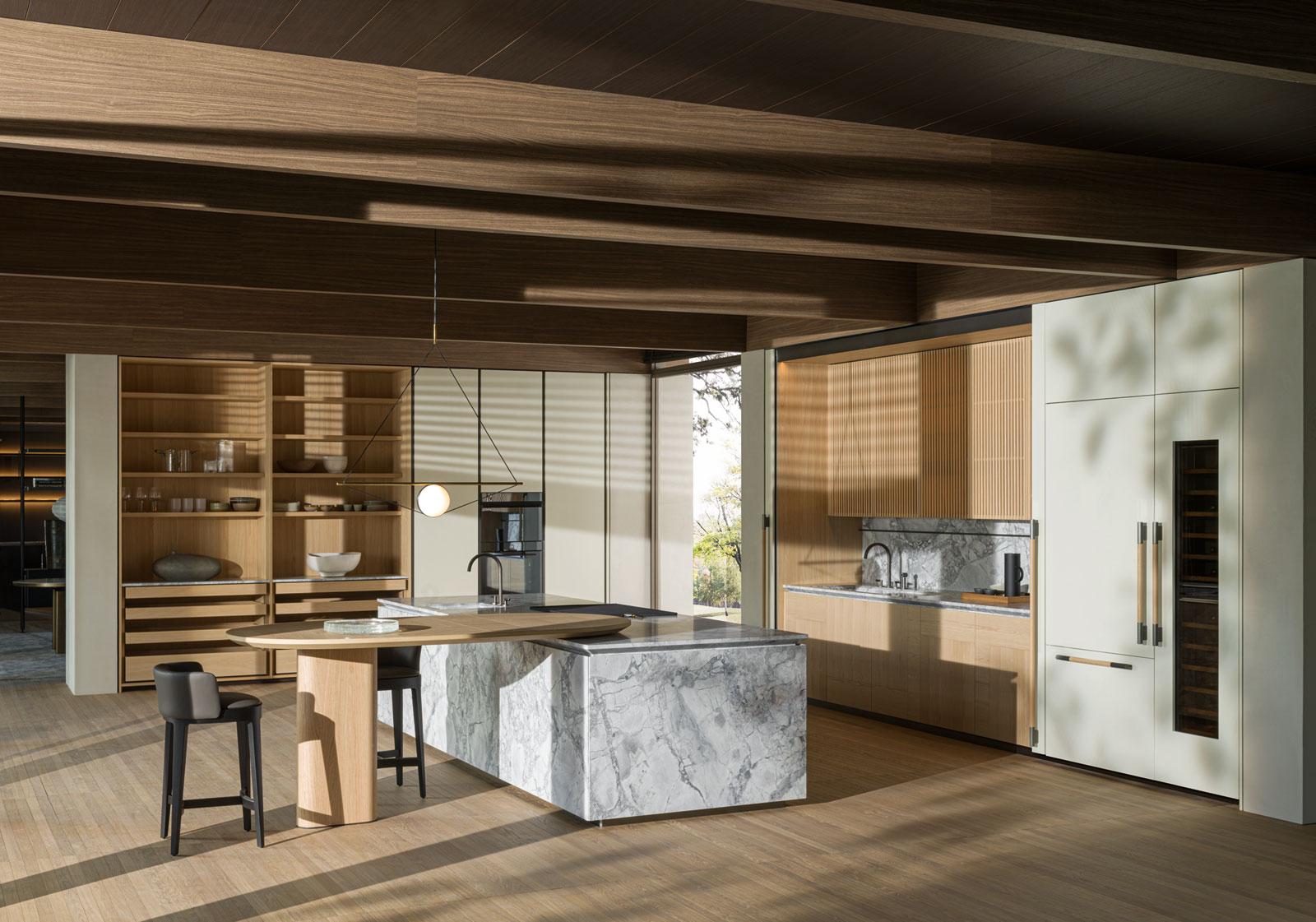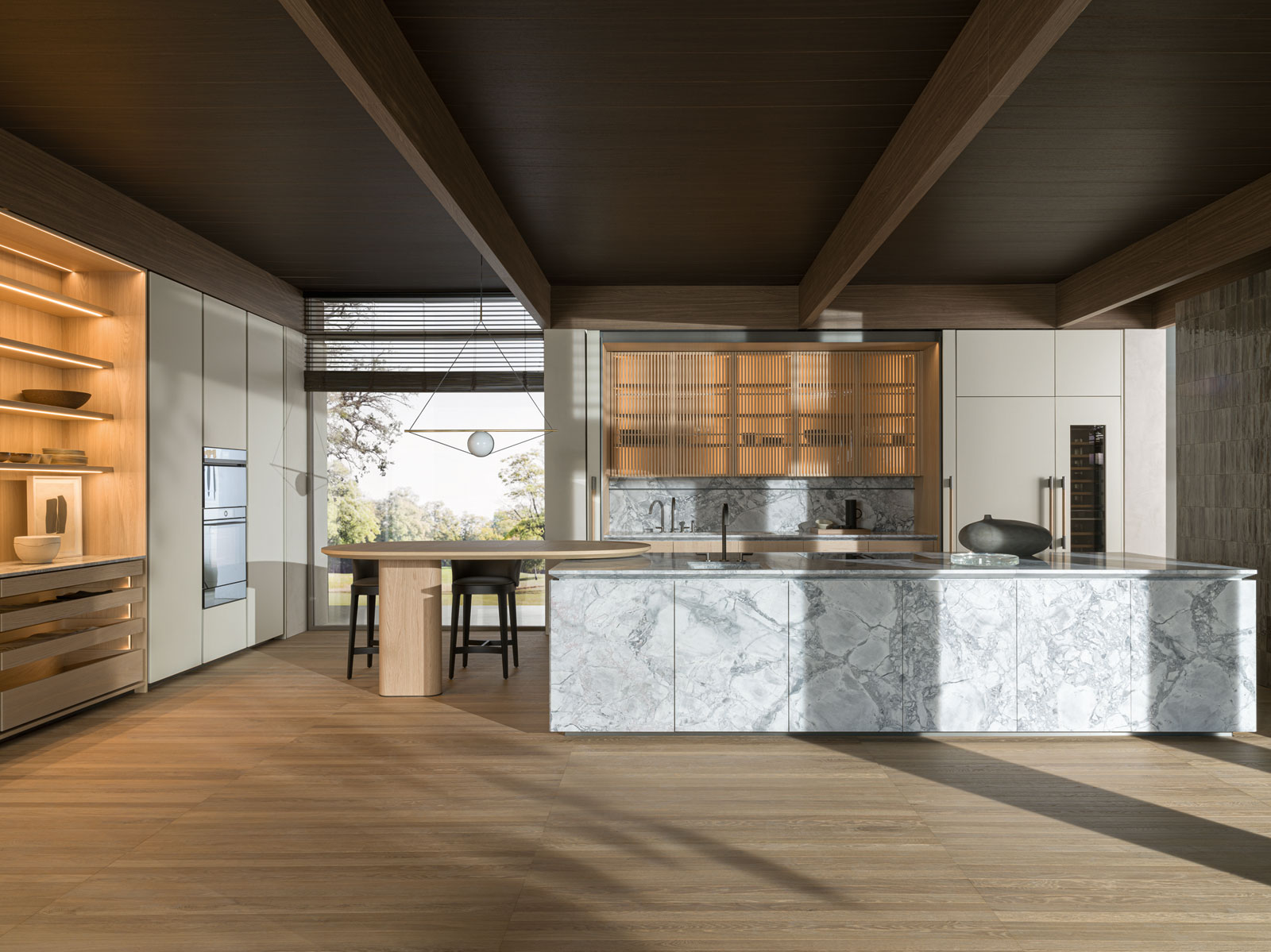Search for articles, topics or more
browse by topics

Search for articles, topics or more

Stanley Kubrick’s 2001: A Space Odyssey opens in prehistoric times. A tribe of apish hominids grunt and gambol in the veldt. Gradually, they notice the monolith: a tall, thin, black rock that resembles a cross between a gravestone and a giant iPod. They quieten down, approach the mysterious object and begin to touch it. We see the sun rise over its rim. Soon after, the apes have learnt how to use tools and weapons, putting them on the evolutionary path to humanity. When two more monoliths appear later in the film, their effect is similarly dramatic. Yet they remain a mystery. Much of their power comes from their appearance: straight, featureless, entirely whole in themselves.
 "Intersection" design Vincent Van Duysen 2019 / 2022 Dada
"Intersection" design Vincent Van Duysen 2019 / 2022 Dada
Kubrick, always meticulous, paid special attention to the design of these monoliths. In this respect, he is one of many who have been beguiled by the monolithic – that is, things formed from a single block of material. Often, these objects seem as if they have started organically and there are, of course, natural monoliths. The largest is Uluru, the lurid red sandstone formation in the centre of Australia, with a 5.8 mile perimeter. Uluru’s oneness made it a locus in Aboriginal mythology, home to ancestral creator spirits.
It is easy to see why humans may have aspired to create their own monoliths since ancient times. The earliest extant monolithic structures were carved from rock. Most, such as the churches of Ivanovo in Bulgaria, are excavated from rock faces and resemble caves. But a few, most impressively the 11 monolithic churches of Lalibela in Ethiopia, are entire structures carved out of stone, with walls, windows and all. They were created by a medieval king who wanted to establish his own new Jerusalem.
The incredible difficulty of creating monoliths of this kind meant that they remain anomalies, but the development of concrete in the early 20th century gave architects the ability to make mono-material structures that give the appearance of being monolithic. One of the first attempts came from inventor Thomas Edison, who in 1908 designed cast-concrete houses. The furniture inside was to be made from a new softer concrete of Edison’s own creation. They were not a success.
Things changed post war, as architects explored concrete’s propensity to produce seamless, unified forms on a previously unheard-of scale. There are boundless examples. Oscar Niemeyer created an enormous free-standing concrete dome in Algeria, punctuated only by a row of small circular skylights and entrances. Tadao Ando’s Centro Roberto Garza Sada in Monterrey Mexico looks like it has been carved out of a single block of concrete, with an interior that resembles an excavation. And Louis Kahn’s Four Freedoms Park in New York gives the appearance of being shaped from the rocks of the island on which it sits.
All these buildings have an element of the sculptural, as if carved by an artist rather than assembled by builders. They evoke a sense of permanence, like the natural monoliths they resemble. And they have a certain aesthetic purity, shorn of uneven bits and bobs. In this, they are the opposite of high-tech architecture such as Renzo Piano and Richard Rogers’ Centre Pompidou, the innards of which splay out on the street for all to see. Monoliths are instead closed off and mysterious. Their workings are hidden.

Today, the aesthetic of the monolithic has expanded beyond architecture and into interior and product design. The rise of manufacturing processes such as injection-moulding, and the continuing miniaturisation of technology, have made the development of such designs more straightforward, allowing for the easy creation of pure, sculptural objects: what the 20th-century architect and designer Eero Saarinen would have termed a “structural total”. Nowhere have these ideas been more apparent than in the work of Apple, which has frequently adopted a “unibody” design for its hardware. Since 2011, its MacBook Pro laptops have compromised two aluminium cases, one enclosing the screen and the other the keyboard and internal processing. Without visible connecting parts or operational hardware, the computer appears to run by magic.
It is this sense of magic and wonder that captivates us again and again in relation to the monolith. Yet while new synthetic materials have eased the creation of such objects, it remains the world of natural materials such as stone where the monolith is most enchanting. In a new kitchen concept being developed by Vincent Van Duysen for Molteni&C, for instance, a familiar domestic setting is rendered new again. In Van Duysen’s design, the entire space appears hewn from a single block of marble, yet with all functionality retained. It is beautiful, sculptural, and seemingly impossible. Kubrick’s apes would have been beguiled anew.


Kitchens are everyday spaces that exist to meet an immediate functional goal. When well designed, they are highly calibrated to support the convenient preparation of food.
In the centre of Milan, a short walk from the duomo, is Villa Necchi Campiglio, designed by Piero Portaluppi (1888-1967) for the Necchi Campiglio family between 1932 and 1935.
How we understand the world of design can depend on the means by which we engage with the subject.
Thanks for your registration.